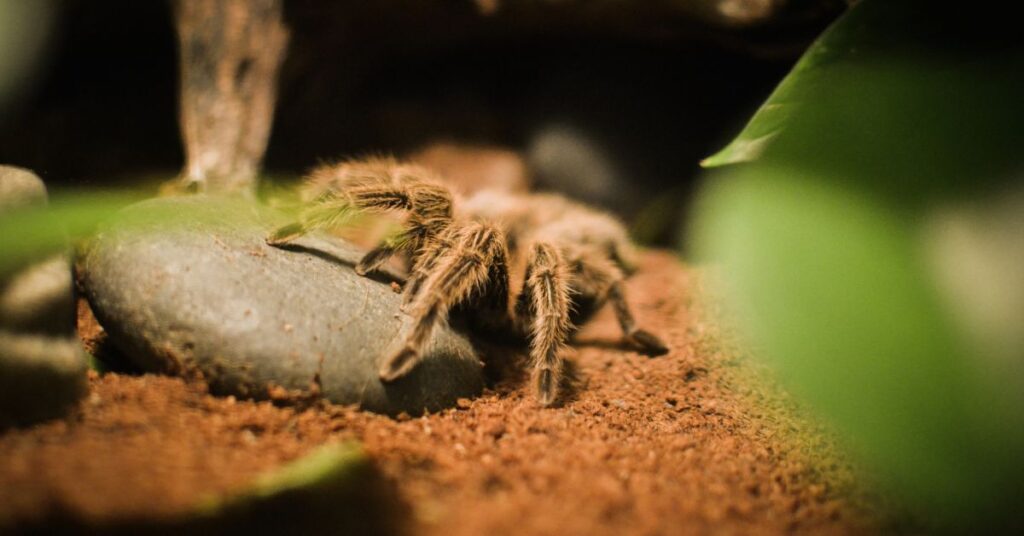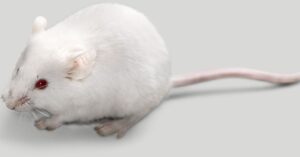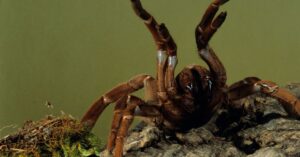
You’ve just bought your first tarantula and have read several articles on how to care for it. One of the burning questions is do tarantulas eat mice? Is it ok to feed my tarantula mice?
Tarantulas are carnivores and will eat prey that is usually smaller than themselves. This includes, but is not limited to, grasshoppers, beetles, and other spiders. Some of the larger tarantulas will even eat small rodents (including mice) and frogs. The Goliath Bird Eater has even been recorded eating a hummingbird!
As you have probably deduced, tarantulas aren’t particularly fussy when it comes to what they eat. As long as it’s smaller than them and made of meat, they’ll attempt to eat it. And yes, mice fall into this category. However, its not quite as clear cut as that. Why? Read on to find out more.
In Captivity
First of all, we should make it clear that you should never try to feed your pet tarantula a fully grown live mouse.
Not only are there all of the below reasons to be concerned about, but mice can be very strong, have sharp teeth and some of them do have the capability to overpower and kill a tarantula.
There is also the potential that the mouse is carrying a disease which can be fatal to your tarantula.
Having said that, if after reading this article, you still wish to feed your animal mice, please use frozen ones. More detailed instructions are below.
Now, having said all that, let’s list some reasons against feeding your pet tarantula mice.
Nutritional?
Even though mice CAN be eaten, there really is not much nutrition that a mouse can provide for a tarantula that an insect could not.
In fact, many people say that mice may actually be too high in fat to be considered a good feeding item.
It makes sense therefore, to continue feeding bugs to your tarantula as at least you will know your pet is getting the right nutrients.
Calcium
There has been a “myth” floating around the internet since the early ‘90’s that due to the inability to absorb the mouse’s calcium, tarantulas who are fed mice are at a heightened risk for very serious moulting problems, which could prove to be fatal.
The larger tarantula species such as the Theraphosa blondi (Goliath Birdeater), Theraphosa stirmi (Burgundy Goliath Birdeater), and Lasidora parahybana (Brazilian Salmon-Pink Birdeater), can grow to such sizes that it is easy for them to take down a mouse.
As these tarantulas can have their own inherent moulting problems naturally, it has become presumed that the reason for these bad moults is down to eating mice.
However, a key point to note is that the skeletons of young mice are mostly cartilage. They’re only beginning to become calcified at that point in time, so vast amounts of calcium aren’t available.
For more information, please read this article from Stanley A. Schultz and Marguerite J. Schultz
In fact, Sam Marshall (Tarantulas and Other Arachnids) and Rick C. West (both respected arachnologists and field investigators who’ve actually been to South America to study T. blondi) have reported that in their wild habitat T. blondi subsisted on a diet very rich in forest floor amphibians. For more information on where do tarantulas live, including the T.blondi, please see our article here.
All of this translates into a natural diet rich in calcium. With no obvious untoward affects.
Let me re-iterate that that this is very much a highly debated subject within the tarantula community and I will leave it to your discretion as to whether you believe it or not.
However, the next reason for not feeding mice to your pet tarantula is not debated and is in fact a very genuine and possible fate that could meet your beloved pet.
Fangs
Feeding your tarantula mice could lead to broken fangs. If the fangs are broken, this could also be fatal.
A tarantula needs fangs to bite down on its prey and inject venom. Without these fangs, it would be impossible to do so and could very well lead to starvation and death.
While your tarantula has no problem crunching down on the exo-skeleton of bugs, the bones of a rodent may actually cause damage to your tarantula’s fangs.
Leftovers
A further argument against feeding your tarantula mice is that they cannot consume it quickly enough.
It is more than likely that you will be left with a half-eaten mouse rotting and collecting bacteria in your tarantula’s tank as well as making your whole house stink!
I Still Want to Feed my Tarantula a Mouse
If you have read this article and still want to feed your animal a mouse, the best ones to feed them are “pinky” mice (newborn mice – as they do not yet have fur and their skin looks pink, they have obtained the nickname of pinky mice).
Be aware that you should ONLY feed these mice to the largest tarantula species, a smaller tarantula would not be able to handle a mouse.
How to Prepare
As we said at the beginning of this article, you should never feed live mice so you will need to thaw your frozen mouse first.
This cannot be done in the microwave as not only could your microwave start actually cooking the mouse, but it could also cause harmful bacteria to start growing in the pinky.
- Place the pinky in a sealable plastic bag like a sandwich ziplock bag and seal it thoroughly.
- Place the bag with the mouse in a container of hot water. Make sure the water is not boiling as again, you don’t want to cook your mouse!
- Leave the bag in the hot water for 10 to 15 minutes. When the pinky is soft to touch, you know that it has been thawed completely.
- If the pinky is still very cold to the touch, leave it in the water a few minutes longer.
The pinky is now ready to be fed to your tarantula.
Remember, if your tarantula doesn’t want to eat the mouse, it is important that you discard it. You wouldn’t defrost meat for yourself then re-freeze it so do not do it for your tarantula.
In the Wild
Now, in the wild, it’s a different story. Tarantulas WILL eat mice but then as stated previously, they’re not fussy eaters.
They are very opportunistic hunters and if a mouse presents itself as prey, it will get eaten.
We have a list of other prey items that a pet tarantula can eat HERE and would recommend that you feed your tarantula these items instead of mice as not only are they easier to store and prepare, but they are more nutritious, and easier for your tarantula to digest.
Finally, you may want to check out our article on do tarantulas make webs. Until next time, stay spidery!



